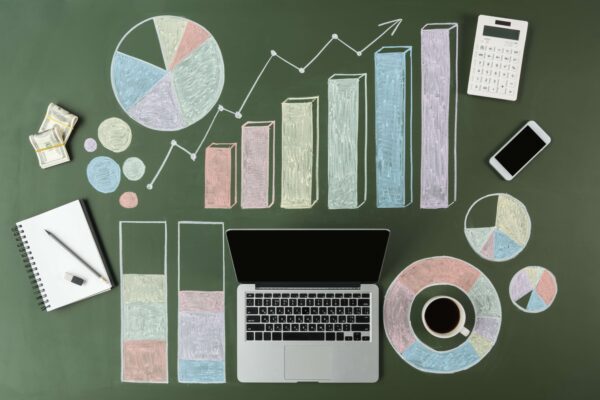The sales development representative (SDR) role has always been built around a mix of consistency and scale. SDRs qualify inbound leads, perform outreach, follow up, and hand off meetings to others ready to close the deal. However, this essential role is often constrained by capacity. As AI tools enter the equation, the future of the SDR role is starting to shift.
The right software can now handle tasks like data collection, qualification, and early engagement. The result is a realignment of the human element: AI offloads high-volume and low-complexity tasks, so that SDRs can focus on conversations that require judgment or more strategic thinking.
In other words, AI is changing the SDR workflow, but in very specific ways. This post explores what the technology can do, as well as what it can’t (and shouldn’t) be tasked with, and what that means for sales teams adapting to a new era of sales development.
The SDR Tasks AI Tools Can Take Over
AI sales engagement tools, sometimes known as AI SDRs, are designed to handle the most repetitive tasks of early-stage sales outreach. They can engage inbound leads, ask standard questions that result in lead qualification, and follow up automatically if no one responds. These tools can operate around the clock and respond instantly, without waiting for a human sales agent to log in.
Some examples of the tasks AI can handle effectively include:
- Responding to contact forms or requests to schedule a demo within seconds
- Asking discovery and lead qualification questions like budget, timeline, and use case of your product
- Qualifying leads based on their responses and other predefined criteria
- Re-engaging cold leads with personalized nudges at times that match their potential timeline
- Routing qualified leads automatically to the appropriate sales rep for their characteristics
All of these workflows tend to follow a repeatable pattern. But even when they don’t, AI can enhance automations based on the context shared by the lead, adjusting in real time to enhance early funnel interactions. In the process, AI SDRs can be faster and handle more volume, which can be difficult to sustain with a human team.
Our comparison between AI SDRs and human SDRs highlights these gains in efficiency, but also clarifies where automation hits its limits. For example, while an AI SDR can collect standard responses and pass along qualified leads, it may still struggle with nuanced buyer personas or emerging customer needs that require a deeper understanding of the market. This is where trained human reps remain essential.
The SDR Tasks Still Requiring a Human
Even in its advanced state, AI cannot replace the full range of skills that human sales reps can bring. Conversations that require persuasion, handling objections, or more nuanced messaging require experience and a human touch. So do outbound campaigns, which tend to involve building custom lists and understanding the full, sometimes unspoken context of each potential buyer.
Common SDR tasks that still require human involvement for optimum success include:
- Handling objections and competitive conversations
- Outbound prospecting and multi-threading
- Personalizing outreach for more complex buyer personas
- Adjusting the message based on real-time context
- Coordinating with marketing and sales leadership on targeting
AI can also lack the emotional intelligence and expertise needed to understand when poor signals don’t fully prevent a lead’s potential to buy. A skilled SDR, on the other hand, can interpret subtle cues, recognizing the potential opportunity, and even shift strategy mid-conversation when the context calls for it.
Rather than replacing SDRs, AI removes the busywork that can prevent human reps from getting to this higher-value work. Freed up from these tasks, human reps can bring their emotional nuance, creativity, and relationship-building abilities into the later stages of the sales funnel and more complex buying situations.
The Evolving Nature of the SDR Role

As AI tools handle more early-stage tasks, the SDR role is becoming less about speed and volume, and more about quality. That shift, in turn, opens the door for SDRs to operate more strategically, focusing on targeted outreach along with building relationships and collaborating more closely with marketing and sales teams. Some of the key changes of the role, induced by AI, include:
- More time for outbound campaigns. While AI can handle inbound inquiries automatically, human SDRs concentrate on targeted outbound sequences requiring research and customization.
- Higher-quality conversations. Leads passed from AI systems are already qualified, so SDRs engage later in the funnel, where discussions are more productive and the chance for a positive outcome is higher.
- Greater emphasis on strategy. Human SDRs can go beyond execution, using their experience to contribute to segmentation, messaging development, and campaign planning.
- Closer alignment with revenue. With fewer manual tasks on their daily to-do list, SDRs can focus on the activities that directly lead to meetings and closed deals.
Evolving into an AI-enabled field also changes the SDR hiring and training process. Soft skills like communication, adaptability, and strategic abilities become more important than the ability to complete a high number of daily calls. SDRs who understand how to work with AI automation can also succeed in this environment.
As SDRs become more strategic, their role may also become more cross-functional. In an AI-enabled world, they may need to collaborate with marketing and customer success teams to align messaging, improve lead handoff, and create a more unified experience.
5 Use Cases That Showcase the Future of the SDR Role
The future of the SDR role is already here. These are five of the use cases we have seen for teams applying AI to sales development.
1. Handling Inbound Leads at Scale
AI can engage thousands of inbound leads simultaneously, qualify them, and pass them to the right rep. Human SDRs are freed up to focus on nurturing campaigns, while AI SDRs provide a timely response to all leads regardless of volume.
2. Supporting Event and Webinar Follow-Ups
After small or large virtual events, AI systems can follow up with all attendees, ask qualifying questions, and schedule sales meetings. This enables human SDRs to focus on personalized outreach for the most engaged prospects.
3. Running Re-Engagement Campaigns
Cold leads in the CRM are easy to overlook. AI can surface and reach out to them systematically, keeping them warm and uncovering hidden opportunities. These campaigns are especially effective for building a secondary pipeline and revenue stream that might otherwise go untapped.
4. Qualifying Paid Media Leads
Paid campaigns generate high lead volumes, but these leads also tend to be less qualified. AI SDRs can screen them before human reps get involved, which helps to improve return on ad spend. Instead of treating all leads the same, the system applies filters that identify who is ready to talk and who needs more nurturing.
5. Segment-Specific Outreach Sequences
AI can customize messaging for different audience segments and even build unique workflows for each segment. As a result, companies can deploy campaigns that match the nuances of individual industries or buyer roles, without having to build custom outreach sequences manually. When prospects respond, human reps can step in with messaging and outreach that’s tailored accordingly.
Each of these use cases shows just how automation and human judgment can work together, and without overlap. The software is designed for volume at scale, while humans can take on the nuance that’s required down the funnel. Together, they can create a more responsive and personalized approach to sales development.
Preparing for the Shift to AI-Augmented Sales Development

The transition to a sales development environment that AI systematically enhances can seem daunting. But with a strong understanding of the role the technology can play, it doesn’t require a complete overhaul.
In most cases, sales teams can start small, like automating inbound lead response or focusing on one campaign at a time. From there, initial successes and failures enable a gradual expansion that defines exactly which parts of the funnel and sales outreach are owned by humans and which AI can take on.
A few steps can help make the most of the shift:
- Define which areas AI will own, and which areas SDRs will retain
- Create clear playbooks for the handoff between the system and human reps
- Monitor the performance on both sides to ensure ongoing alignment
From there, the possibilities are limited only by the imagination of strategic planning. For some, splitting responsibilities between automation managers and strategic outbound reps may make the most sense. Others may use AI as a clearly defined and limited support tool, freeing up some hours for more strategic outreach every week.
The future of the SDR role doesn’t include a complete AI takeover. Instead, it’s about finding the balance of technology optimization and human nuance. At its best, it doesn’t replace human reps, but makes their work more strategic, rewarding, and successful.
Teams that adapt to this shift early will become more likely to see stronger pipelines and higher conversion rates down the road. As automation begins to handle the high-volume top of the funnel, the human side of the role becomes more specialized and valuable.
To see what that looks like in practice, book a demo with Verse and explore how AI sales engagement tools can integrate with your existing team.


